Action and adventure titans go head to head in this week’s showdown, featuring two of the most iconic main themes ever written in film score history. John Williams’ 1981 Raiders of the Lost Ark, the first (and arguably best) of the “Indiana Jones” franchise, against Elmer Bernstein’s 1960 career-definer, The Magnificent Seven.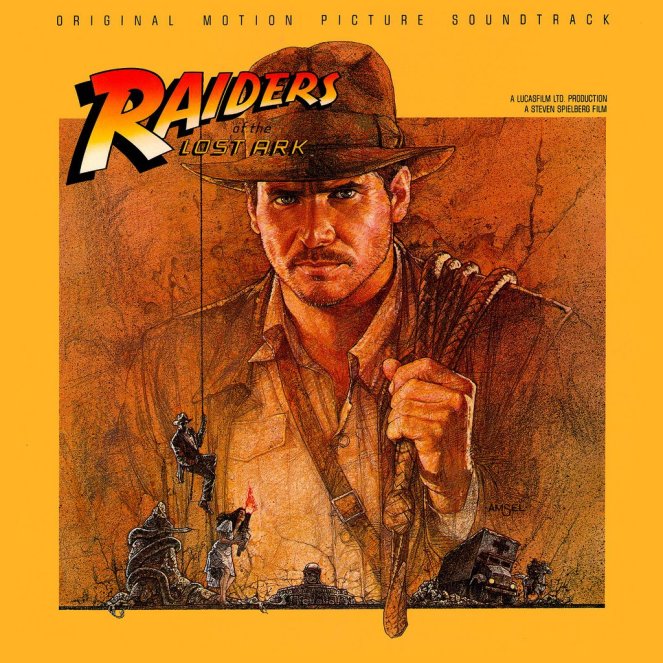 As usual we begin with the higher seeded entry. Raiders of the Lost Ark is undoubtedly a firm favourite in John Williams’ canon. Following hot on the heels of his masterpiece effort on The Empire Strikes Back, Raiders looked back to the Golden Age action and adventure films such as The Adventures of Robin Hood, The Adventures of Don Juan, and The Mark of Zorro as much as Star Wars did. Not surprising, considering that Steven Spielberg and George Lucas worked together to direct Raiders, and both knew exactly what kind of score they wanted from their go-to composer. This was the pinnacle of Spielberg’s, Lucas’, and Williams’ careers, especially for Williams, who from 1977-1983 seemed to do nothing wrong, scoring masterpieces for every major motion picture he was attached to, and defining the sound of the “Bronze Age” of film music. The romantic revivalist style of Williams is almost perfectly twinned to the visual style and substance of Raiders, and throughout the film Williams nailed the emotions of each and every scene, from the gritty action in the jungles, temples, and deserts of the film’s late-1930s globe-trotting settings, to the awe and wonder of the Ark of the Covenant.
As usual we begin with the higher seeded entry. Raiders of the Lost Ark is undoubtedly a firm favourite in John Williams’ canon. Following hot on the heels of his masterpiece effort on The Empire Strikes Back, Raiders looked back to the Golden Age action and adventure films such as The Adventures of Robin Hood, The Adventures of Don Juan, and The Mark of Zorro as much as Star Wars did. Not surprising, considering that Steven Spielberg and George Lucas worked together to direct Raiders, and both knew exactly what kind of score they wanted from their go-to composer. This was the pinnacle of Spielberg’s, Lucas’, and Williams’ careers, especially for Williams, who from 1977-1983 seemed to do nothing wrong, scoring masterpieces for every major motion picture he was attached to, and defining the sound of the “Bronze Age” of film music. The romantic revivalist style of Williams is almost perfectly twinned to the visual style and substance of Raiders, and throughout the film Williams nailed the emotions of each and every scene, from the gritty action in the jungles, temples, and deserts of the film’s late-1930s globe-trotting settings, to the awe and wonder of the Ark of the Covenant.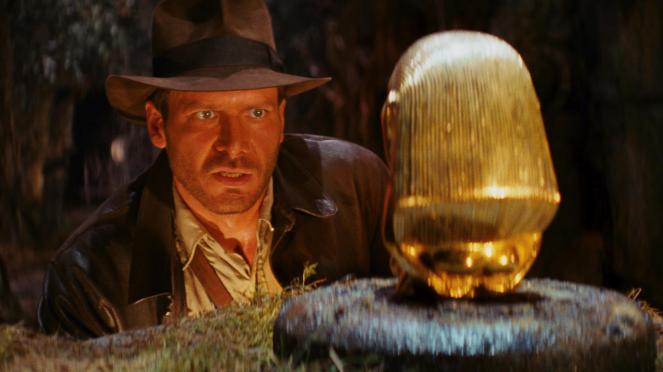 Of course, the ‘Raider’s March’ is the first thing that pops into anyone’s head when somebody mentions “Indiana Jones”. Like Monty Norman’s 007 theme or Williams’ Imperial March for Darth Vader, the ‘Raider’s March’ is ingrained in popular culture as the dominant identity for the serial protagonist, Henry “Indiana” Jones Jr. As iconic as his trilby and whip, the ‘Raider’s March’ began life as two alternative themes which Williams presented to Spielberg to choose between. Spielberg liked both so much he asked Williams to combine them. The A phrase motif climbs its way up to a major fifth (but not a perfect fifth, as for the morally idealistic Luke Skywalker or Superman; the more grounded and gritty Indiana Jones gets no such treatment), on rousing trumpets with horns, timpani, flutes and strings to accompany. The B-phrase has a major sixth melodic leap on romantic strings with harp and woodwinds, much like Williams’ theme for Princess Leia. When finished we return to the A-phrase of the march, reclaiming that grounded heroism as the dominating identity for Indiana Jones. The ‘Raider’s March’ is the core of the score, and enjoys numerous variations and renditions throughout.
Of course, the ‘Raider’s March’ is the first thing that pops into anyone’s head when somebody mentions “Indiana Jones”. Like Monty Norman’s 007 theme or Williams’ Imperial March for Darth Vader, the ‘Raider’s March’ is ingrained in popular culture as the dominant identity for the serial protagonist, Henry “Indiana” Jones Jr. As iconic as his trilby and whip, the ‘Raider’s March’ began life as two alternative themes which Williams presented to Spielberg to choose between. Spielberg liked both so much he asked Williams to combine them. The A phrase motif climbs its way up to a major fifth (but not a perfect fifth, as for the morally idealistic Luke Skywalker or Superman; the more grounded and gritty Indiana Jones gets no such treatment), on rousing trumpets with horns, timpani, flutes and strings to accompany. The B-phrase has a major sixth melodic leap on romantic strings with harp and woodwinds, much like Williams’ theme for Princess Leia. When finished we return to the A-phrase of the march, reclaiming that grounded heroism as the dominating identity for Indiana Jones. The ‘Raider’s March’ is the core of the score, and enjoys numerous variations and renditions throughout.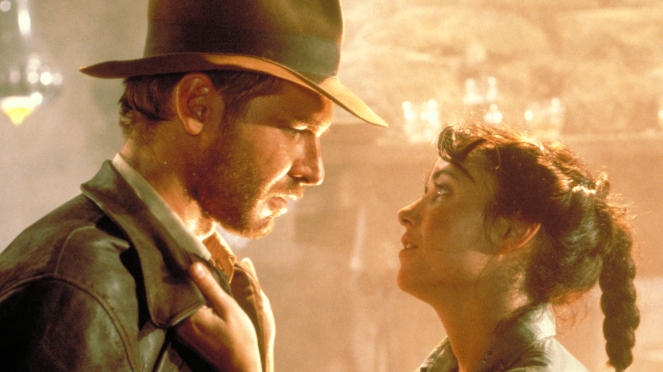 But unlike some scores hailed as great in retrospect despite the actual quality of the work (I’m looking at you, Chariots of Fire), Raiders of the Lost Ark provides not just an iconic main title but also an entire package of excellence throughout the length of the score. Three major motifs are referred to continuously, each containing a high level of harmonic beauty, and a host of sub-themes underneath flesh out the bulk of the score. The action sequences (of which there are four major ones) have noticeable tonal structure and fluid rhythms, making them a very enjoyable listening experience, especially given the clean construct of the music, without the unnecessary layers of instrumentation that would start to dominate his later modern scores. Williams’ descriptive capabilities are astounding – just listen to the opening track ‘In the Jungle’ to get that sense of the harsh environment and arduous journey, or ‘The Idol Temple’ for a creepily polyphonic rendering of a dangerous place. The fluttering trumpet and whirling strings at 3:00 of ‘In the Jungle’ followed by the descending melody for the brass as Indy makes his first on-screen appearance hides nothing about his character – this is not a fellow to be messed with.
But unlike some scores hailed as great in retrospect despite the actual quality of the work (I’m looking at you, Chariots of Fire), Raiders of the Lost Ark provides not just an iconic main title but also an entire package of excellence throughout the length of the score. Three major motifs are referred to continuously, each containing a high level of harmonic beauty, and a host of sub-themes underneath flesh out the bulk of the score. The action sequences (of which there are four major ones) have noticeable tonal structure and fluid rhythms, making them a very enjoyable listening experience, especially given the clean construct of the music, without the unnecessary layers of instrumentation that would start to dominate his later modern scores. Williams’ descriptive capabilities are astounding – just listen to the opening track ‘In the Jungle’ to get that sense of the harsh environment and arduous journey, or ‘The Idol Temple’ for a creepily polyphonic rendering of a dangerous place. The fluttering trumpet and whirling strings at 3:00 of ‘In the Jungle’ followed by the descending melody for the brass as Indy makes his first on-screen appearance hides nothing about his character – this is not a fellow to be messed with.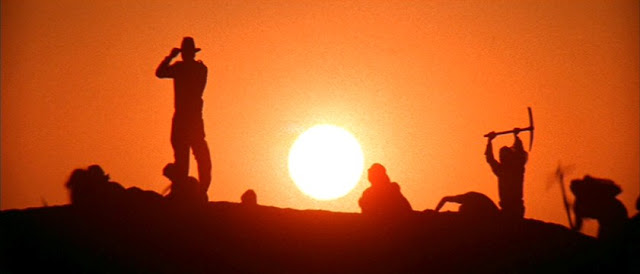
The second most prominent motif in the score is for Indy’s love interest, Marion Ravenwood, the B-phrase of the ‘Raider’s March’. The major sixth melodic leap is a classic Williams’ love theme construction, as is the half diminished supertonic, and the addition of the Phrygian supertonic (ooh fancy music words) adds the orientalist feeling for the well-travelled Marion. The theme is introduced in ‘A Thought for Marion’, and enjoys lovely renditions in ‘To Cairo’ and ‘Reunion in the Tent’ and ‘Marion’s Theme’, and an especially harsh version in ‘The Basket Game’ concerning a near-death experience. However, the key theme for the narrative is that of the Ark of the Covenant. An underrated gem in Williams’ canon, the motif attracts a frightening religious weight and sense of doom in its descending structure. Following a first appearance in ‘Washington Men’, it dominates tracks such as ‘The Map Room: Dawn’ and ‘The Miracle of the Ark’, in which the choral performances and swirling string accompaniments allude to the supreme power of the Ark in a sublimely spine-chilling manner.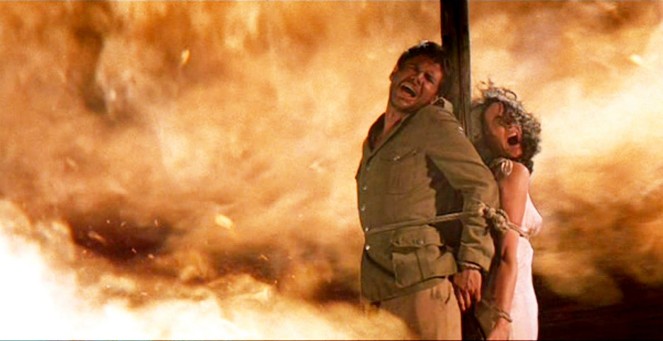 As mentioned above, minor themes exist throughout the score, especially a great many for the antagonists of the film, the Nazi commanders, scientists, and enforcers. The general sound of marching strings, brass, and snare rolls encompasses their militaristic identity, reminiscent of parts of The Empire Strikes Back, with some bold minor key brass for Agent Toht. Regrettably, there is little development of these lesser motifs, almost too many for decent exposure. There also appears to be a general “artefact hunting” theme for bass woodwind and strings, with added bassoon on occasion. Speaking for the rest of the music, choices in rhythm and instrumentation add to this score’s superior nature, the subtle increase in tempo to reflect the growing tension in ‘Desert Chase’ is masterful, and of course, the finale is spectacular, reaching into horror territory as the villains melt and explode as they gaze into the Ark. Percussion accentuates the dissonant strings and brass that accompany their deaths, and, after the Ark theme’s one final choral expression, Williams allows the its final note to swirl like the wind, fluttering downward to the moment the Ark’s lid lands. Aside from a lack of specificity in the secondary material, this is a golden score, the finest of the Raiders trilogy, and one of the most influential and iconic of the Bronze age scores.
As mentioned above, minor themes exist throughout the score, especially a great many for the antagonists of the film, the Nazi commanders, scientists, and enforcers. The general sound of marching strings, brass, and snare rolls encompasses their militaristic identity, reminiscent of parts of The Empire Strikes Back, with some bold minor key brass for Agent Toht. Regrettably, there is little development of these lesser motifs, almost too many for decent exposure. There also appears to be a general “artefact hunting” theme for bass woodwind and strings, with added bassoon on occasion. Speaking for the rest of the music, choices in rhythm and instrumentation add to this score’s superior nature, the subtle increase in tempo to reflect the growing tension in ‘Desert Chase’ is masterful, and of course, the finale is spectacular, reaching into horror territory as the villains melt and explode as they gaze into the Ark. Percussion accentuates the dissonant strings and brass that accompany their deaths, and, after the Ark theme’s one final choral expression, Williams allows the its final note to swirl like the wind, fluttering downward to the moment the Ark’s lid lands. Aside from a lack of specificity in the secondary material, this is a golden score, the finest of the Raiders trilogy, and one of the most influential and iconic of the Bronze age scores. The Magnificent Seven, a 1960 American remake of Akira Kurosawa’s 1954 film Seven Samurai, is considered to be a classic of American film-making by those who haven’t seen Seven Samurai. Kurosawa’s film was excellent, and John Sturges capitalised on the strengths of Seven Samurai, adding the Wild West setting and utilising an impressive “Silver Age” cast including Yul Brynner, Steve McQueen, Charles Bronson and James Coburn. The narrative is compelling, centred around 7 gunmen converging on a village of Mexicans to protect it from bandits, but each with their own reasons. My recollection of the film is poor, but I do recall the final showdown being impressively shot and directed. However, what praise the film garnered when it was released has been overshadowed by the enduring popularity of its score, composed by Elmer Bernstein. Bernstein was a titan of the “Silver Age” of film scoring, whose work included The Man with the Golden Arm, The Ten Commandments, To Kill a Mockingbird, The Great Escape and Ghostbusters. However it is this film’s score that garners Bernstein the most renown.
The Magnificent Seven, a 1960 American remake of Akira Kurosawa’s 1954 film Seven Samurai, is considered to be a classic of American film-making by those who haven’t seen Seven Samurai. Kurosawa’s film was excellent, and John Sturges capitalised on the strengths of Seven Samurai, adding the Wild West setting and utilising an impressive “Silver Age” cast including Yul Brynner, Steve McQueen, Charles Bronson and James Coburn. The narrative is compelling, centred around 7 gunmen converging on a village of Mexicans to protect it from bandits, but each with their own reasons. My recollection of the film is poor, but I do recall the final showdown being impressively shot and directed. However, what praise the film garnered when it was released has been overshadowed by the enduring popularity of its score, composed by Elmer Bernstein. Bernstein was a titan of the “Silver Age” of film scoring, whose work included The Man with the Golden Arm, The Ten Commandments, To Kill a Mockingbird, The Great Escape and Ghostbusters. However it is this film’s score that garners Bernstein the most renown.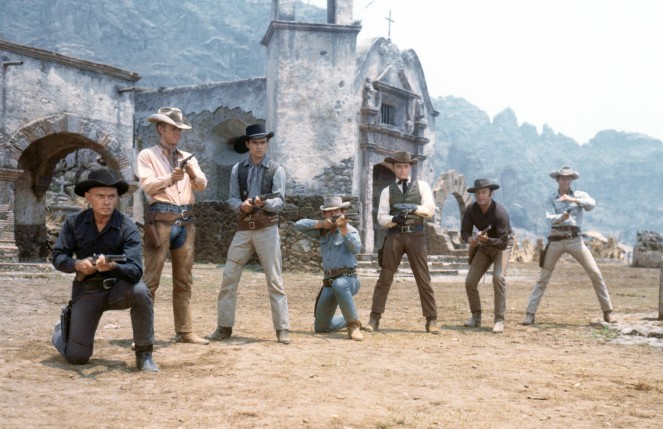 The Magnificent Seven is considered to be one of the best western scores out there , largely because of its insansely catchy and memorable ‘Main Title’. The five loud gunshot-style bangs will get your attention, and the rhythmic, punchy brass and sweeping string motif will keep you humming away. Such music is almost synonymous with cowboys, gunfights, saloons, and fisticuffs at high noon – it’s the Star Wars of Westerns. There have been many arrangements and suites of this iconic main title, and I would wager they are all better than the actual ‘Main Title’ of the soundtrack; here the theme for the Calvera bandits is inserted two minutes into the track. The theme itself is not bad, in fact it’s quite excellent for the slightly one-dimensional villains, and given some period accuracy with the guitar and light percussion, but it’s placement here alongside the iconic main title seems a little egregious. Then again, that’s how the film plays out, so I can’t really fault the album for accurate underscoring. The “Calvera” theme appears immediately after in ‘Council’ and later in ‘Calvera’s Return’ and ‘Calvera Routed’.
The Magnificent Seven is considered to be one of the best western scores out there , largely because of its insansely catchy and memorable ‘Main Title’. The five loud gunshot-style bangs will get your attention, and the rhythmic, punchy brass and sweeping string motif will keep you humming away. Such music is almost synonymous with cowboys, gunfights, saloons, and fisticuffs at high noon – it’s the Star Wars of Westerns. There have been many arrangements and suites of this iconic main title, and I would wager they are all better than the actual ‘Main Title’ of the soundtrack; here the theme for the Calvera bandits is inserted two minutes into the track. The theme itself is not bad, in fact it’s quite excellent for the slightly one-dimensional villains, and given some period accuracy with the guitar and light percussion, but it’s placement here alongside the iconic main title seems a little egregious. Then again, that’s how the film plays out, so I can’t really fault the album for accurate underscoring. The “Calvera” theme appears immediately after in ‘Council’ and later in ‘Calvera’s Return’ and ‘Calvera Routed’.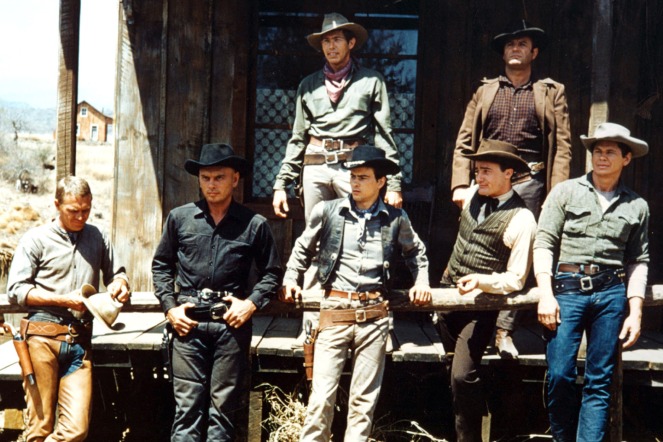
It becomes apparent as you listen throughout the score that the music only really shines when either of these two main themes is given a rendition. Unfortunately the music surrounding any renditions of these motifs feels lacking next to their quality. Most of it is actually somewhat compelling, and a great demonstration of Bernstein’s adaptation of the scoring techniques used by his mentor Aaron Copland to score Westerns and other Americana films. But every time you hear just a snippet of the ‘Main Title’ even in orchestration or melodic hint, and aren’t given a full blast rendition, you are disappointed. To highlight particulars of the rest of the score, there is plenty of Mexicana to help conjure a setting in ‘Quest’, while ‘Toro’ displays an excellent and powerful trumpet and guitar combo with castanets, that must have been somewhat inspirational for James Horner and his score for The Mask of Zorro. ‘Training’ provides us with a short but sweet waltz of sorts, as the gunmen prepare the villagers to fight back; again the shakers, woodwind and trumpets emphasise Mexican sensibilities as well as a sense of danger. There is tension and action in the former and latter half of the score, especially ‘Strange Funeral’, the first major action setpiece, all of it harking back to Golden Age scoring technique with the added Mexican flavour. Like Chariots of Fire last week, I do believe that The Magnificent Seven as a soundtrack has coasted by on nostalgia, and perhaps solely the knowledge of the main theme. Because it so easily defined the “Western” sound, and coupled with a quality film, the music was elevated to legendary status. Many fans of the score probably are fans because they love the film, which is absolutely fine. In actuality, both The Magnificent Seven and Raiders of the Lost Ark are pretty excellent in their ability to personify their respective film genres, and remain in the consciousness of the film-watching public for so long. However, in my personal opinion, breaking down each of the scores analytically has revealed that Raiders of the Lost Ark has more thematic and emotional content. It spoke more boldly to the listener than The Magnificent Seven, which felt more like musical wallpaper, appropriate for the film, but not explaining anything to us about the characters more than what we see on screen. We hear action, we hear heroism, we hear Mexicana, and that’s it – nothing about the individual personalities of the gunmen or the villagers or Calvera. With Raiders of the Lost Ark you get more of an insight into the characters, and by musical construction get a feel of what may occur in a scene before it even happens, with all the positive qualities of memorable motifs and excellent emotional music that The Magnificent Seven could provide on top.
Like Chariots of Fire last week, I do believe that The Magnificent Seven as a soundtrack has coasted by on nostalgia, and perhaps solely the knowledge of the main theme. Because it so easily defined the “Western” sound, and coupled with a quality film, the music was elevated to legendary status. Many fans of the score probably are fans because they love the film, which is absolutely fine. In actuality, both The Magnificent Seven and Raiders of the Lost Ark are pretty excellent in their ability to personify their respective film genres, and remain in the consciousness of the film-watching public for so long. However, in my personal opinion, breaking down each of the scores analytically has revealed that Raiders of the Lost Ark has more thematic and emotional content. It spoke more boldly to the listener than The Magnificent Seven, which felt more like musical wallpaper, appropriate for the film, but not explaining anything to us about the characters more than what we see on screen. We hear action, we hear heroism, we hear Mexicana, and that’s it – nothing about the individual personalities of the gunmen or the villagers or Calvera. With Raiders of the Lost Ark you get more of an insight into the characters, and by musical construction get a feel of what may occur in a scene before it even happens, with all the positive qualities of memorable motifs and excellent emotional music that The Magnificent Seven could provide on top.
If this were a battle of the main themes there would be no winner, as each is as memorable, well constructed, and enjoyable as each other. But as a complete score, Raiders of the Lost Ark takes it. Sorry Western fans!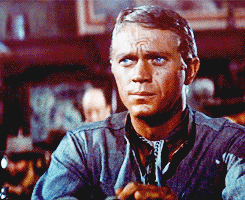 NEXT WEEK: Star Wars (#2) vs. The Good, The Bad, & The Ugly (#15). Oh boy.
NEXT WEEK: Star Wars (#2) vs. The Good, The Bad, & The Ugly (#15). Oh boy.